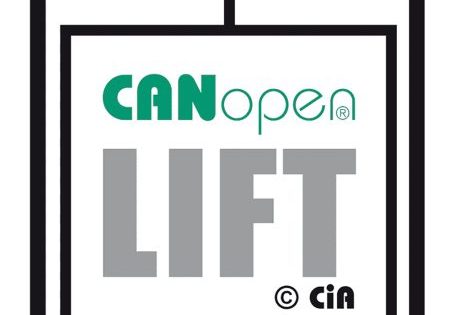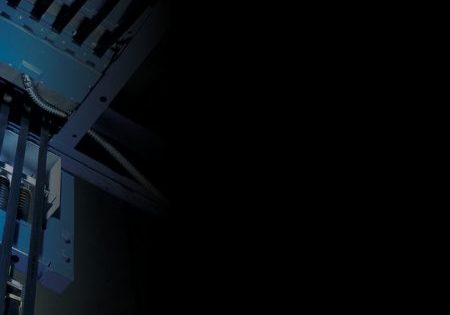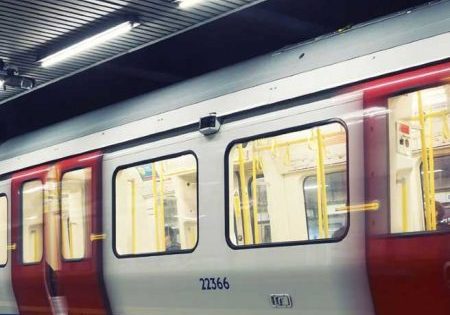Meeting Demands, Rising to Challenges
Apr 5, 2023

A look at the U.K. and Nordics VT markets and beyond
Otis Market Group Lead U.K. and Nordics and Managing Director U.K. Andy Bierer (AB) is ultimately in charge of approximately 2,200 employees across nine countries. This, of course, involves thousands of unique customers and market variables, all under a larger macroeconomic and global trend umbrella. Bierer took the time to speak with your author (KW) about the challenges and opportunities of this major market group, as well as larger trends shaping the company and the industry.
KW: What distinguishes the U.K. and Nordics markets from those in say, North America and Asia?
AB: The U.K. and Nordics market group consists of nine countries: Denmark, Estonia, Finland, Iceland, Latvia, Lithuania, Norway, Sweden and the U.K. On the surface, what makes the group most different is that, with nine different countries, there are nine different levels of complexity for how you conduct business to meet the statutory requirements — different codes, unions and unique customer demands in each market; this is markedly different from the U.S. However, one thing most have in common is that they are fairly mature and stable markets; this is similar to the U.S., but not Asia, which is still broadly an emerging market.
KW: So how does Otis address that?
AB: We’ve done it several ways. It starts by having a clear set of priorities. As a team, we spend a lot of time visiting and listening in on all the individual countries and ensuring we adjust our priorities in a bespoke way for the local markets so we’re supporting and capturing their local opportunities. That’s the first thing we do. Then, it informs what goes into our strategic framework, which is the top set of objectives we set for ourselves annually. We go through an internal process each year and decide which actions will have the most impact and focus on those. When we travel to these markets, we hear which demands they have for new products. We also listen to what they want in terms of service, both now and in the future. Across both, a lot of that is tied back to digitalization. We’ve been able to meet some of these countries’ growing demands through the deployment of our Gen360TM fully digitally native elevator platform. It’s a new release for us and will serve the new equipment and construction markets.
“Who wins the war for talent will be a deciding factor for the future.”
On the service side, we’ve been able to build on our existing digital architecture for Internet of Things (IoT) connectivity with a product we call Otis ONETM. We’ve had a great running start with how we extract data from our elevators and escalators: We’ve been remotely monitoring elevators for more than 30 years, so we already have material levels of connectivity in place. We’re now taking it to the next level by investing in devices that, essentially, create a digital twin of any elevator where we can see in real time exactly what’s going on with it, irrespective of whether it’s brand-new or of an older vintage.
KW: Other than the fierce competition, what are the main business challenges in the U.K. and Nordics and how are they being addressed?
AB: I think we all find that the labor that’s available doesn’t quite match with the growth ambitions of the construction market today. We need to figure out how to get more people into our business. A lot of us are competing for the same talent, whether it’s the elevator and escalator trade competing with electricians’ roles or HVAC (heating, ventilation and air conditioning) roles or another kind of building service industry. Who wins the war for talent will be a deciding factor for the future.
KW In my opinion, vertical transportation (VT) is sexier than HVAC or being an electrician. Maybe that could be showcased to young people.
AB: As a 15-year elevator man, I fully agree with you. One of the things we’ve done differently, and what makes us special in the market, is our investment in apprenticeships. This works differently than in the U.S., because a large portion of U.S. elevator companies are International Union of Elevator Constructors (IEUC) signatories. The IUEC is a great partner for apprenticeships that provide a direct path to the elevator trade in the U.S. Here (in the U.K.), development of apprentices and investment in apprenticeship programs is solely up to the individual companies. Several years back, to the credit of my (Otis U.K.) predecessors, Otis decided to launch an apprenticeship program here. There are always going to be market constraints and challenges, but that program really helps us manage them: we can say to young, talented people looking for a career that, “Here’s a path for you,” and that’s something that differentiates Otis from many of our competitors in the market.
KW: What is your business outlook for the countries you oversee, and what will be the main business drivers?
AB: As mentioned, these are mature markets and, with that, they are fairly stable. Our mix of service and new equipment is similar to that of the global business. The service business, irrespective of macroeconomic effects, remains fairly stable. We also find that, in terms of capital market contraction or even warning signs of recession, funds tend to be reinvested in existing assets, which benefits our modernization business as we provide renovation solutions across our industry-leading portfolio. People reinvesting in their assets drives repair volume, as well as full modernization. We’re very well-placed in all of this. So, in terms of business outlook, we’re seeing positive inertia still on the construction side and a lot of activity from last year continuing uninterrupted into the new year. We’re going to be carefully watching that across all markets into the back half of this year. Whatever happens, I still feel confident that the mix in our business will help us remain stable and continue to grow.
“The industry continues to have more data at its fingertips than ever before, which allows us to introduce new ways of doing things.”
KW: Tell me about how Otis is on the cutting edge technology-wise.
AB: Gen360 is the first digitally native elevator on the market. Through digitalization, we can provide enhanced safety and more flexibility in planning and design. In addition to that, Gen360 delivers a step change in how we look at the design of our units and the flexibility it provides to architects or developers. Additionally, it introduces a new electronic architecture which will have service benefits. When you think about everything previously being highly mechanical, that’s really a distinguishing difference. Think about your vehicle or some of the things in the aerospace industry where they’ve gotten past the mechanical interfaces and are using more electronics. That’s something that we are moving toward. We have improved visibility and can glean more insight because of that digital architecture that also enables IoT. That’s just on the construction side.
On the service side, we have Otis ONE, which is an IoT solution we’ve developed. It paves the way for what we call “smart maintenance.” Otis ONE is an IoT network that feeds the data we’re obtaining into the cloud. We have a data lake where information is aggregated, enabling us to glean useful insights into asset performance, which in turn informs how we deliver our maintenance services. For example, if the elevator in the building where you live shuts down and you have to call for service, it’s highly likely that the technician who will be arriving at your property will have already seen the faults that led to the shutdown, thanks to the speed and instant visibility provided by digitalization. We can even intervene remotely on many issues. But, if they can’t, the engineer will still have a head start and know exactly where to begin the in-person troubleshooting, as opposed to going through a traditional, top-to-bottom process. This enables Otis to get your elevator back into service faster. That’s really the power of technology: We have all this data and connectivity available from which we can pull diagnostics and prognostics to ensure maximum uptime.
KW: Would it be safe to say you feel this is a boon and a help to VT technicians, rather than a threat to their jobs?
AB: Yes. I see it as a tool for engineers (mechanics). We can’t get enough engineers into this trade, but when we do get them in, we are able to help them work more efficiently and safely because of the technologies we’re introducing. The industry continues to have more data at its fingertips than ever before, which allows us to introduce new ways of doing things. We want to push the boundaries of the industry and don’t want it to be stuck where it was 30 years ago. Otis will continue introducing new services and products based on IoT and APIs to constantly improve the experience, ultimately for the customers and the passengers.
KW Anything else you would like to add?
AB: On behalf of the whole team, I want to say “Thank you” for the recognition of the 22 Bishopsgate project (“Project of the Year,” Elevators, New Construction, ELEVATOR WORLD, January 2022). That was really exciting for everyone involved. The project is in London, but it was truly international. Throughout the project, Otis had team members from more than 12 countries involved. We also built it during the pandemic. Our engineers, technicians, testers, and project managers all have their fingerprints on it, and they really felt that win.
Get more of Elevator World. Sign up for our free e-newsletter.









